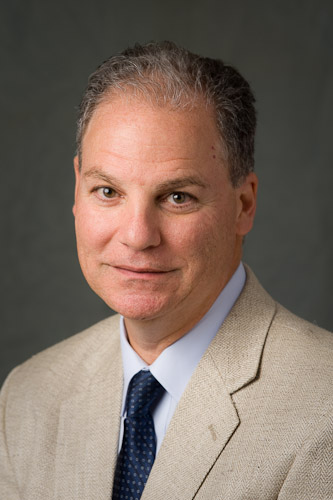Lehigh University
Office or Center Name Here
James M. Ricles
Bruce G. Johnston Professor of Structural Engineering
Director - ATLSS Engineering Research Center
Director - NSF NHERI Lehigh Experimental Facility
Editor-in-Chief, Engineering Structures
Department of Civil and Environmental Engineering
Lehigh University
Real-time Hybrid Simulation: Cyber-Physical Structural Experimentation for Improving Civil Infrastructure Resilience to Natural Hazards
click here to view video
Wednesday, November 20, 2024 - 4:30 pm EST
Professor James Ricles' expertise is in the area of structural engineering and mechanics with application to structural resiliency. He received his B.S and M.S degrees from the University of Texas, Austin and his PhD from the University of California, Berkeley. He is the Bruce G. Johnston Professor of Structural Engineering and has been a faculty member of the Department of Civil and Environmental Engineering at Lehigh University since 1992. James is the Director of both the Lehigh ATLSS Engineering Research Center and the NSF Natural Hazards Engineering Research Infrastructure (NHERI) Lehigh Experimental Facility. Prior to joining the Lehigh University faculty, he worked for Exxon Production Offshore Research Company and was a faculty member at the University of California, San Diego. Among James’ research interests is the development and implementation of computational frameworks for large-scale multi-physics multi-directional RTHS, with applications to complex structural systems subjected to multi-natural hazards. James is a registered professional engineer in the State of California, the Editor-in-Chief of Engineering Structures, and serves on the Editorial Advisory Board for the International Journal of Earthquake Engineering and Structural Dynamics. Among his awards, he is the recipient of the NSF Presidential Young Investigators Award, the ASCE Raymond C. Reese Research Prize, the AISC Special Achievement Award for his work in innovations in structural resiliency, and Engineering Structures Featured Paper Award for his contributions to the advancement of RTHS.
Real-time Hybrid Simulation: Cyber-Physical Structural Experimentation for Improving Civil Infrastructure Resilience to Natural Hazards. Stakeholders are demanding that the performance of the built civil infrastructure be more resilient to natural hazards in order to reduce their impact on society. Performance-based engineering is a means to attempt to meet performance objectives associated with prescribed levels of hazards. A viable technique to meet validation requirements for performance-engineered structural systems is to use real-time hybrid simulation (RTHS) to perform cyber-physical experiments. The complete system is involved in these simulations, where selected components of the system are modeled physically while others are modeled numerically using computational models. The modeling of the former in the physical domain is required because accurate computational models do not exist for these components. In such studies response modification devices can be coupled to a system that is subjected to a prescribed hazard with a specific return period, enabling system performance under prescribed levels of realistic hazard demands to be established. The talk will present results from recent efforts that the presenter and the research team at the NSF Natural Hazards Engineering Research Infrastructure (NHERI) Lehigh Experimental Facility have completed to advance large-scale multi-directional RTHS. The purpose of these advancements is to enable the assessment of the response of civil infrastructure systems to natural hazards. The advancements and their formulations will be introduced, followed by the presentation and discussion of their application to perform multi-physics RTHS of structural systems under earthquake and wind natural hazards. The studies to be presented include response of offshore wind turbine systems subject to normal and extreme conditions, aeroelastic and earthquake response of tall buildings, efficacy of nonlinear viscous damper systems in enhancing the seismic resiliency of low rise buildings, and simulations with soil-structure interaction effects that involve neural networks and machine learning. These studies demonstrate that RTHS can accurately simulate complex responses to multiple hazards in real-time, providing insights for improving structural resilience. The talk will conclude with future directions that are envisioned to take place in cyber-physical structural simulation.
